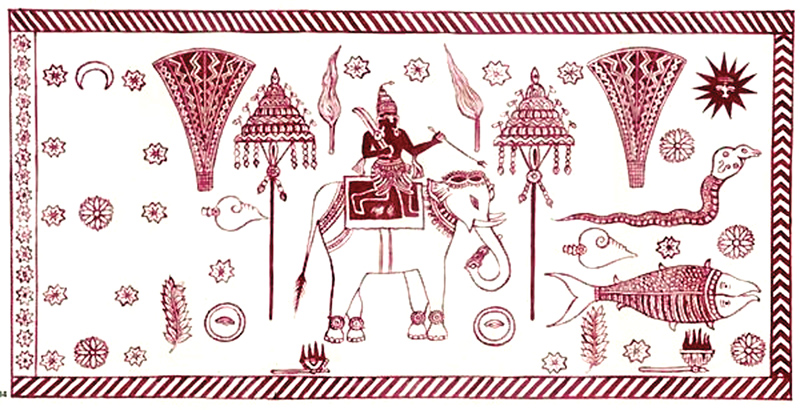Long before the Swiss mathematician Bernoulli in the 17’th century discovered the famous theorem named after him, Kaurava boat builders knew the out rigger canoe will sail against the wind, if two sails were rigged in the fore section of the canoe, their math acumen coming from the copious consumption of Omega 3 fatty acid.
 The first recorded instance of the existence of these people is the Abhayagiri vihara terrace inscription dating from the 1’st century BC denoting a Kaurava navika. (The 1’st century was the century that lasted from AD 1 to AD 100. It is often written as the 1’st century AD to distinguish it from the 1’st century BC which preceded it).
The first recorded instance of the existence of these people is the Abhayagiri vihara terrace inscription dating from the 1’st century BC denoting a Kaurava navika. (The 1’st century was the century that lasted from AD 1 to AD 100. It is often written as the 1’st century AD to distinguish it from the 1’st century BC which preceded it).
Historical manuscripts such as the Mukkara Hatana indicate that there were several migrations from India including the Kuru Mandalam Coromandal coast of South India. Kaurava people claim an ultimate origin from king Kuru, the founder of the Kuru dynasty described in the epic Kauravas of the Mahabharata, the Sanscript epic describing the Great War between the descendants of Baharata in which the 5 Pandava brothers with the help of Krishna, were victorious over the Kauravas.
The Kaurava people of Sri Lanka came in contact with the Portuguese, Dutch and English and assimilated with regard to education, dress, religion and customs and exploited the new opportunities in commercial enterprises. The Kauravas north of Colombo like the Kurukulasooriyas are mostly Catholics. Those south of Colombo like the Patabendiges are mostly Buddhists. They were seafaring merchants and a naval and military caste and were mercenaries to kings in India and Sri Lanka.
Kandyan chiefs
The Kauravas were entitled to use flags. British Government Agents have noted that not a single flag could be found even in the residencies of Kandyan chiefs as even they were not entitled to use flags. A large number of Kaurava flags have survived the ravages of time. Apart from flags, the Kauravas were the only community entitled to use royal insignia such as pearl umbrellas, swords, tridents, yak tail whisks.
Ge names denote a person’s ancestry. The Kauravas traditionally used the title or clan name. Ge names precede an individual personal name unlike a surname which follows ones personal name. The Kaurava Ge names show military, royal or maritime heritage.
Some members of the Kaurava caste descend from a Iberian ancestry dating back to the 16’th century, as it is known that the Portuguese men were ordered to marry local women, where apart from the Ge names also used their Iberian derived surnames like Fernando, De Silwa, De Mel, Perera, Dias, Mendis. Often Kauravas also belong to the Suria clans. Kurukulasooriya, Jayasooriya, Weerasooriya, are examples and appear to indicate distinct streams of migration.
Hazardous journey
On an assignment for the ADB, I took a plane from Rangoon to Mandalay and from there to Pagan by Jeep. On the way I got the Anglo Burmese driver, who spoke fluent English, to stop at Amarapura, an ancient capital of Upper Burma, now in ruins.
Removing my shoes, tiptoed into hallowed ground made sacred by countless Kaurava Buddhist monks who travelled here, centuries back from Dodanduwa, Mirissa, Ambalangoda, Panadura, travelling the hazardous journey by sailing ship to Rangoon and from there to Amarapura by foot for their higher ordinations.
It was eerie and the silence deafening as if the ancient monks were watching and the stones crying, weeping and pleading that a Kaurava wealthy merchant, who reads the essay in the Daily News, step forward and build a hermitage allowing that seedling to grow into a mighty tree for a new generation of Sri Lankan Kaurava monks, like their ancestors, may return to their heritage.
The Founder of the Amarapura Nikaya is the Most Venerable Walitota Sri Gnanawimalatissa Maya Thera. The monastic fraternity, Amarapura Nikaya, is named after the city of Amarapura in Burma, the capital of the Konbaung dynasty.



Add new comment